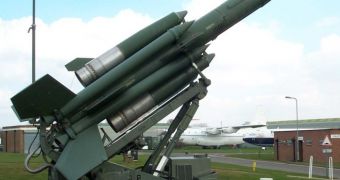More and more money is spent on military purposes, while science and health are far from doing well, let alone benefit from similar budgets. While it's hard to argue that national security and defense are crucial tasks, it is also important to know that only the missile defense program that's been going on for about eight years has cost around $100 billion. As a part of this program, on December 5th 2008, the US Military performed a test during which a long-range ballistic missile was shot down.
Taking out this missile was a demonstration of the ability to thwart a possible attack coming from potentially hostile nations such as Iran or North Korea, according to senior defense officials. The missile that simulated the attack was sent off from Kodiak Island in Alaska, at 3:04pm Eastern time, was tracked by a number of ground and ship-based radars at the same time, then brought down 25 minutes later by a "kill vehicle" about 3,000 kilometers far, above the Pacific Ocean, as stated by the Missile Defense Agency.
"It was the largest, most complex test we have ever done," shared Lieutenant General Patrick O'Reilly, chief of the Missile Defense Agency, during a Pentagon news conference following the test, as quoted by the Washington Post. "The key to our protection [...] is to be able to have all of these different sensors simultaneously tracking" and identifying the same item, which happened for the first time with this test, he explained. "The kill vehicle was sent to a very accurate spot in space," and this achievement "does give us great confidence," he added.
Still, the countermeasures of the 40-year old target missile, thought to add to the realism of the experiment, did not deploy. This test, which cost around $120 million, is focused on dealing with "the type of long-range ballistic missile that could be used to attack the nation with a weapon of mass destruction," stated the agency, and is similar to those being deployed in Japan and Poland. "The geometry of a launch from North Korea to the U.S. is very similar to Kodiak off the coast of California," claimed O'Reilly.

 14 DAY TRIAL //
14 DAY TRIAL //